Rome in ruins: the ancient city lain waste
Are the residents of Italy’s capital waking up to the rancid state of their city? Or are they mired by the Roman trait of ‘menefreghismo’, the attitude of not caring less? Jason Horowitz investigates
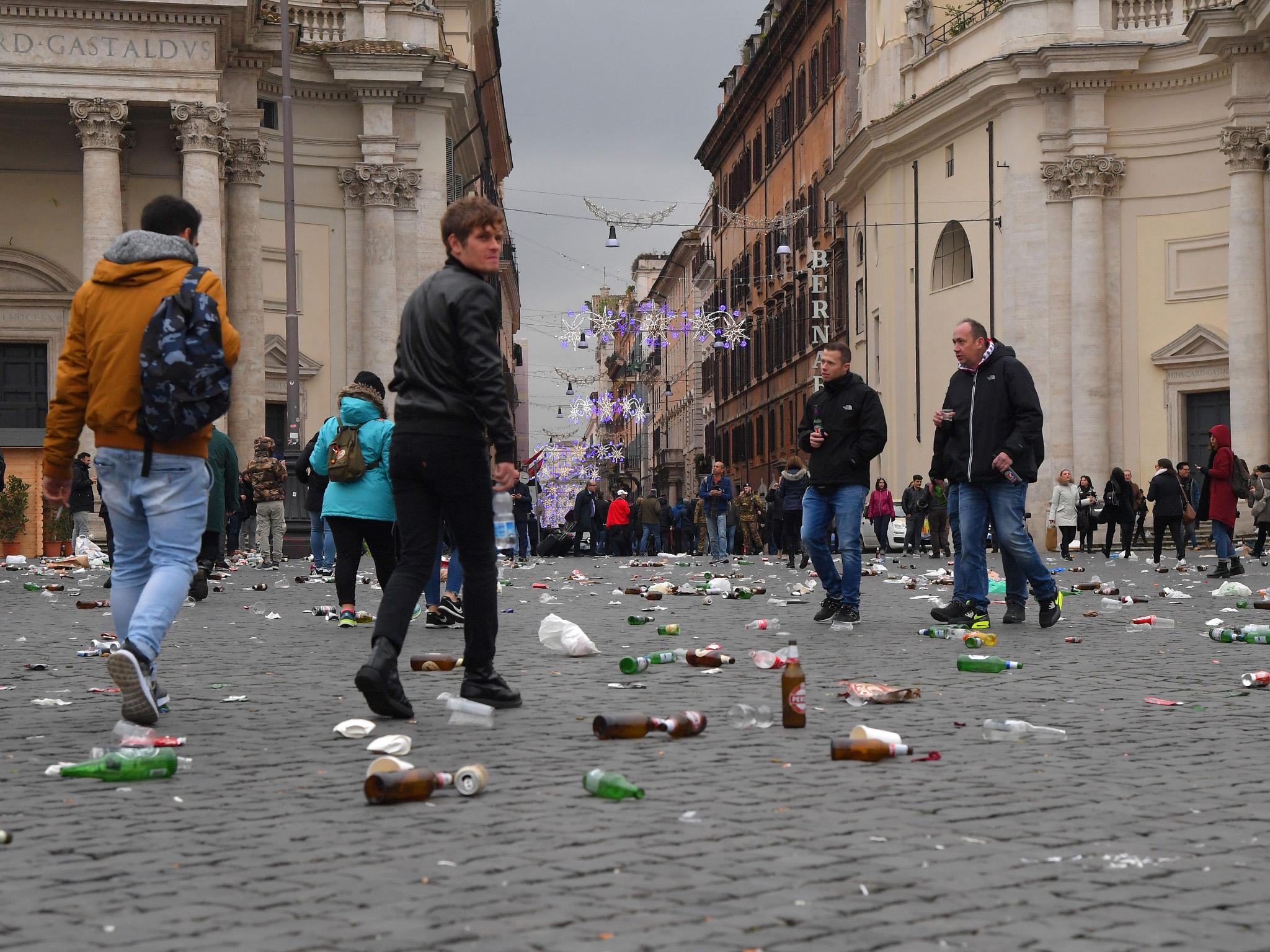
Stepping outside Termini station, the gateway to Rome for many visitors, my tour guide asks me what I see.
“Graffiti?” I say. “Trash?”
“Exactly,” he says. “A Roman would not see this. The Roman is so beaten down by the filth in which he lives that he can no longer recognise or see the sad state of the city.”
Benvenuti a Roma! To be fair, Massimiliano Tonelli is not a regular tour guide. He is a founder of Roma Fa Schifo, or Rome Is Gross, the popular blog and social media feed that, since 2007, has sought to awaken complacent Romans to see Rome for what he thinks it is: an abnormal and broken relic in a continent of modernising cities. I had asked him to show me around, because in my nearly two years as the Rome bureau chief for The New York Times, I was worried I was beginning to do – and see – as the Romans.
Tonelli points out the double-parked cars jutting into intersections. On the broad avenue bordering the fashionable Monti neighborhood, he bends down to grab at shin-high weeds breaking through the cement. (“The signs of abandonment,” he says.) Underneath St Peter in Chains church, with its majestic Moses sculpted by Michelangelo, he looks sadly at the striped crosswalk that has faded to black.
Only weeks ago a tour bus killed a prominent judge here. This month, one killed a cyclist, prompting the city to effectively ban tour buses in the centre, which in turn prompted the bus operators to protest by turning Rome’s central traffic circle, Piazza Venezia, into a car park. In the meantime, the city has not repainted the stripes white, but has begun talking, surreally, about implementing 3D technology.
We go up to the Giardinetto del Monte Oppio, a small garden offering one of the most breathtaking views in the western world, smack in front of the Colosseum. A Brazilian couple use the backdrop for pictures, but out of frame, and off their Instagram feed, is the Rome that tourists often choose not to see: empty beer bottles, cigarette packs, stained paper towels, soiled clothes and littered food are spread around like some grotesque picnic. Illegal souvenir sellers stash their blue plastic bags full of trinkets in the tree limbs before ducking into bushes that they use as toilets.
In the neighbourhoods around us, sidewalks are cluttered with soaked mattresses, refrigerators and armchairs. Garbage trucks covered in graffiti move past walls scrawled with the city’s lament: “Roma Guasta” or “Broken Rome”.
“It’s so much worse because the city is so stunning,” says Tonelli, who adds, with resignation, “from three metres up, it is still the most beautiful city in the world.”
Unrestrained beauty, overflowing bins
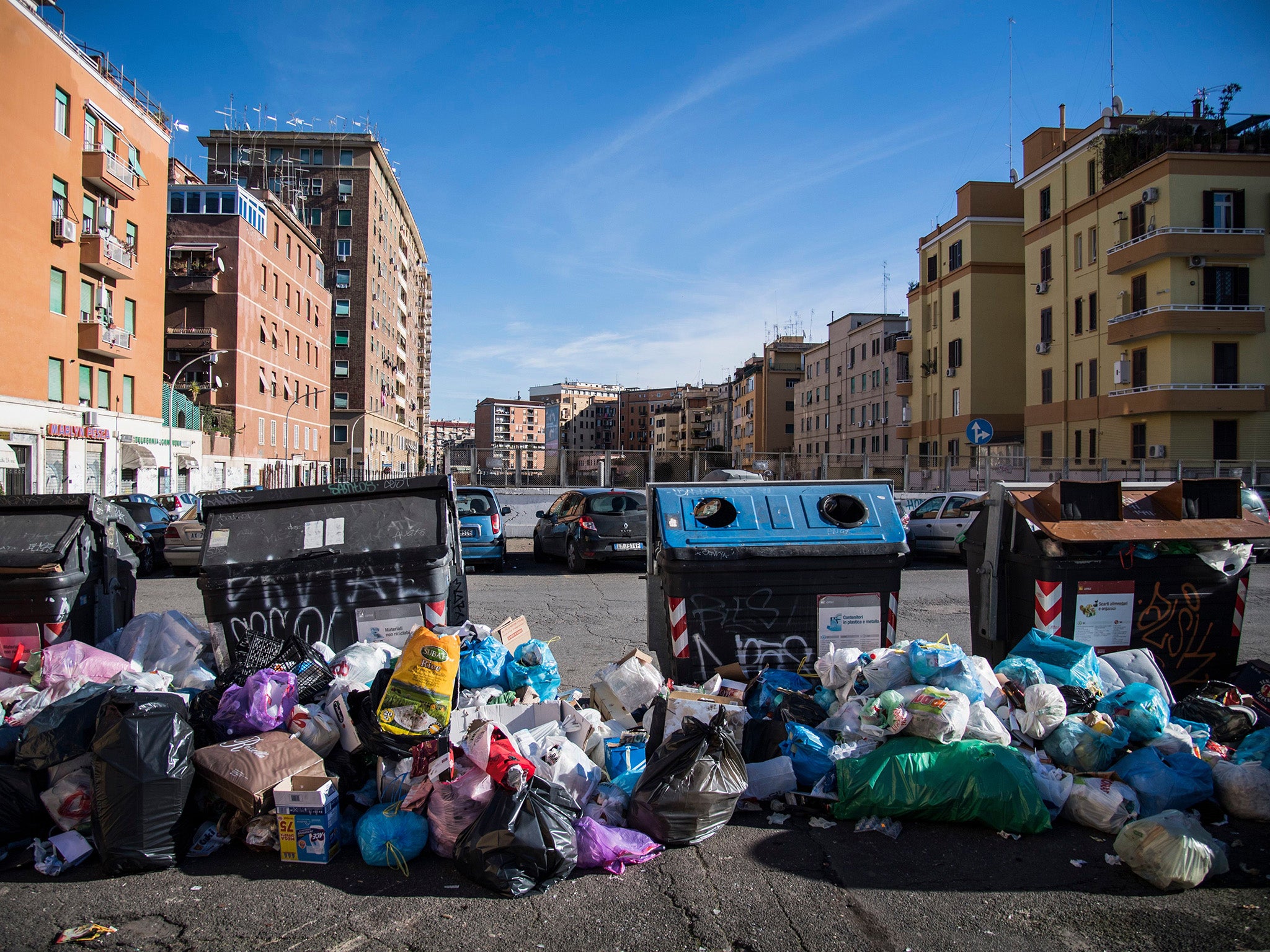
I love Rome. I love the way the sunset throws pink light on the marble monuments. I savour the silky carbonara at Da Cesare al Casaletto. I enjoy the exhibits at the MAXXI contemporary art museum, the murmurations of starlings moving like smoke above the umbrella pines. I get a kick out of my kids calling their tennis instructor “maestro”, and miss the cold not one bit. I’ve spent a decent chunk of my life here, met my wife here, support AS Roma here. And so Rome, I only say this because I love you.
Rome is in danger of becoming a dump. I don’t mean the rubbish heap of history, which is how the poet Petrarch envisioned the city in the 14th century. I don’t mean a precious junkyard of alfresco antiquities, Renaissance gems and Baroque treasures. I mean a dump.
The laurels upon which the city has rested for so long are wilting. Rome now overwhelms the senses, not just with unrestrained beauty, but with overflowing bins, like rancid coral reefs sprouting pink and blue and yellow garbage bags on seemingly every city street. Seagulls, protecting their trashy turf, caw in the air, and public buses – which often break down, sometimes explode, but rarely arrive on time – screech on the ground. Potholes rupture spinal discs. Dimly lit streets force drivers to develop night vision. Uncurbed dogs render sidewalks treacherous. My son calls Rome “poop city”.
None of this is a secret. Il Messaggero, the Roman daily, may as well be called the “Garbage Gazette”, dedicating itself to documenting the city’s decline. (“No Heat in the Schools”; “Few and Broken Benches: Everyone Standing in the Park”.)
Escalators in the metro remained out of service for weeks after an October accident nearly amputated the feet of Russian tourists. This month, some central stations failed to open at all and a member of parliament proposed bringing in the army to fill the potholes. In the meantime, fences in the streets guard sinkholes or workers perennially digging to fix leaking pipes, pushing motorists into oncoming traffic. The public villas, Rome’s green lungs, have become post-apocalyptic landscapes where vagabonds sleep on slides and yellow Roma Capitale tape sections off fallen trees like crime scenes. Vermin slink through the hip-high weeds in the land where wild boars now roam.
All of which would lead some students of history to ask: “So, what else is new?” Exempting its glorious high points, Rome is no stranger to languishing in backwardness. Pope Gregory XVI once rejected streetlights as the devil’s work and centuries of papal, noble or politically corrupt misrule kept the city in the dark.
Rubbish is not a new problem either. A 1752 order by the “Illustrious and Reverend Monsignor” overseeing roads is still inscribed in the wall by Piazza Farnese, prohibiting dumping “in this site and place, garbage of any kind, or of creating a garbage dump, under penalty of 25 scudi for every offence”.
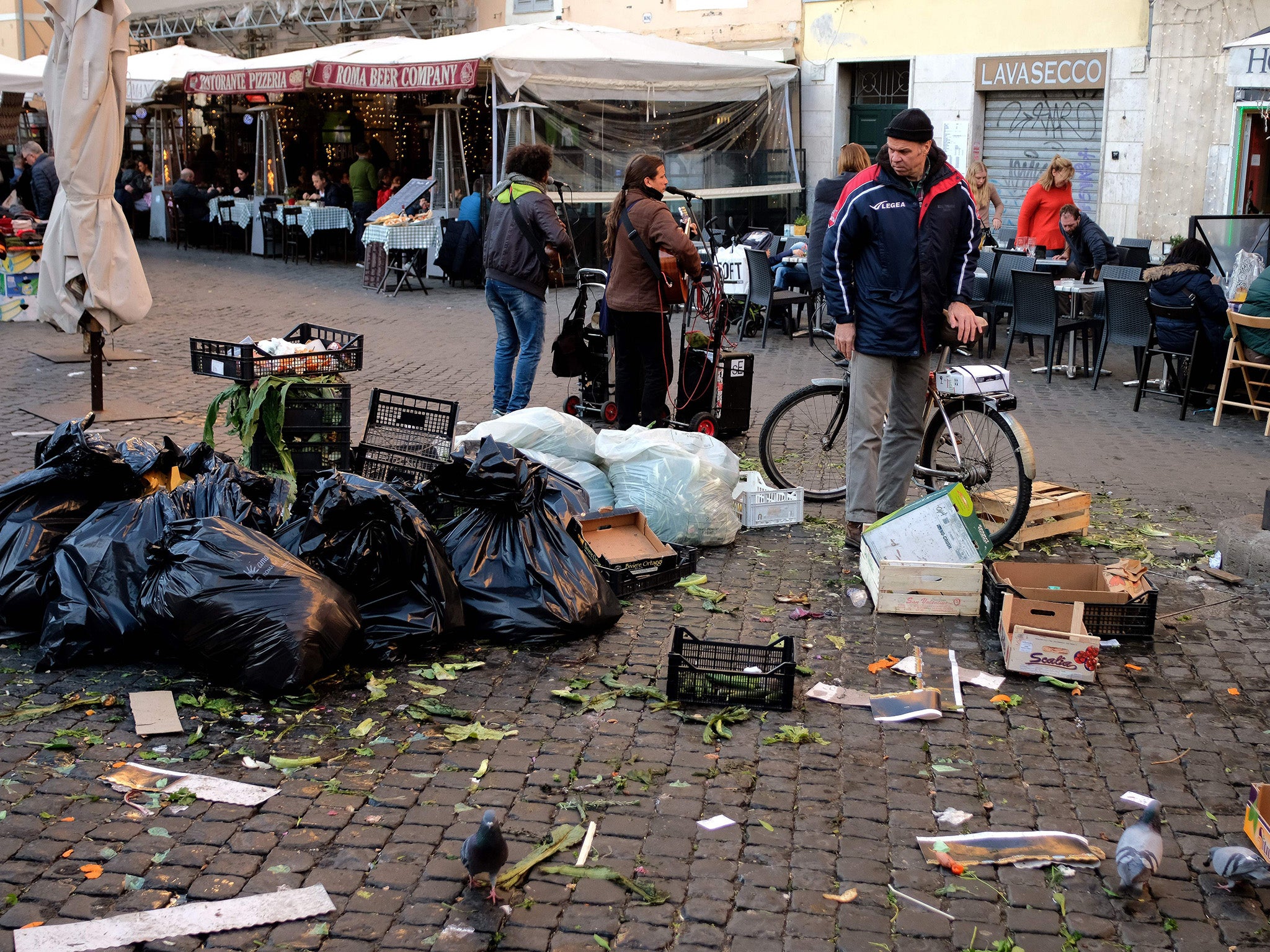
But the timelessness that is supposedly Rome’s appeal, the chaos that once seemed a sign of life compared to staid Milan, has gotten out of hand. While other Italian cities have made strides (“Naples is amazing”, “Milan is Europe”, go the frequent refrains), Rome fell in a November listing of the best places to live in Italy from 67th to 85th place, one spot behind Cosenza, Calabria.
A caveat
Right about here seems like a good place, in the interests of fairness, accuracy and self-preservation (I can see the furious Rome romantics reaching for their Dolce Vita-brand pitchforks) to issue the requisite “Rome is Spectacular” caveat. And it is.
In the historic centre, you have more cultural riches, boutiques and cacio e pepe spots than you know what to do with. If you want upscale, on the elegant – if clogged – Viale Parioli, you can sip at the Enoteca Bulzoni, nosh at Ercoli, or feast at the airy Molto. If you’re after what tour companies call the “authentic Roman experience”, go to Testaccio market, grab a sandwich from Mordi e Vai and explore Monte Testaccio, a hill built from broken terra-cotta amphorae – in other words, an ancient trash heap.
And yet, if you listen to Romans – in the wealthy centre or the gritty periphery – you hear a disgust that binds. Romans all over endlessly bemoan the sad state of affairs and debate what brought them so low. Politicians talk about hobbled sanitation and transportation agencies riddled by absenteeism, nepotism and bloated workforces. Residents bemoan an administration that is overmatched by Rome’s problems and that has failed to adapt to the 2013 closure of an ecologically disastrous dump – overseen by a garbage mogul called “Il Supremo” and his aides – or the service sector corruption infamously exploited by the one-eyed gangster known as “The Pirate”.
Who is to blame?
Some point to the economic crisis, the overabundance of disregarded byzantine laws, the lack of police enforcement. The socialists blame the influence of a forgiving church for creating a culture of permissiveness. The Catholics attribute the lack of individual accountability to the ideology of socialism. Historians talk about a resentment of authority resulting from centuries of foreign overlords and corrupt leaders.
Whatever the cause, Rome’s charming world-weariness has given way to a cynicism of epidemic proportions. The overwhelming Roman response to the degradation is to share memes on social networks. Friends exchange pictures, not of their children, but of the garbage piles growing on their streets. “Just look at how big it has gotten”.
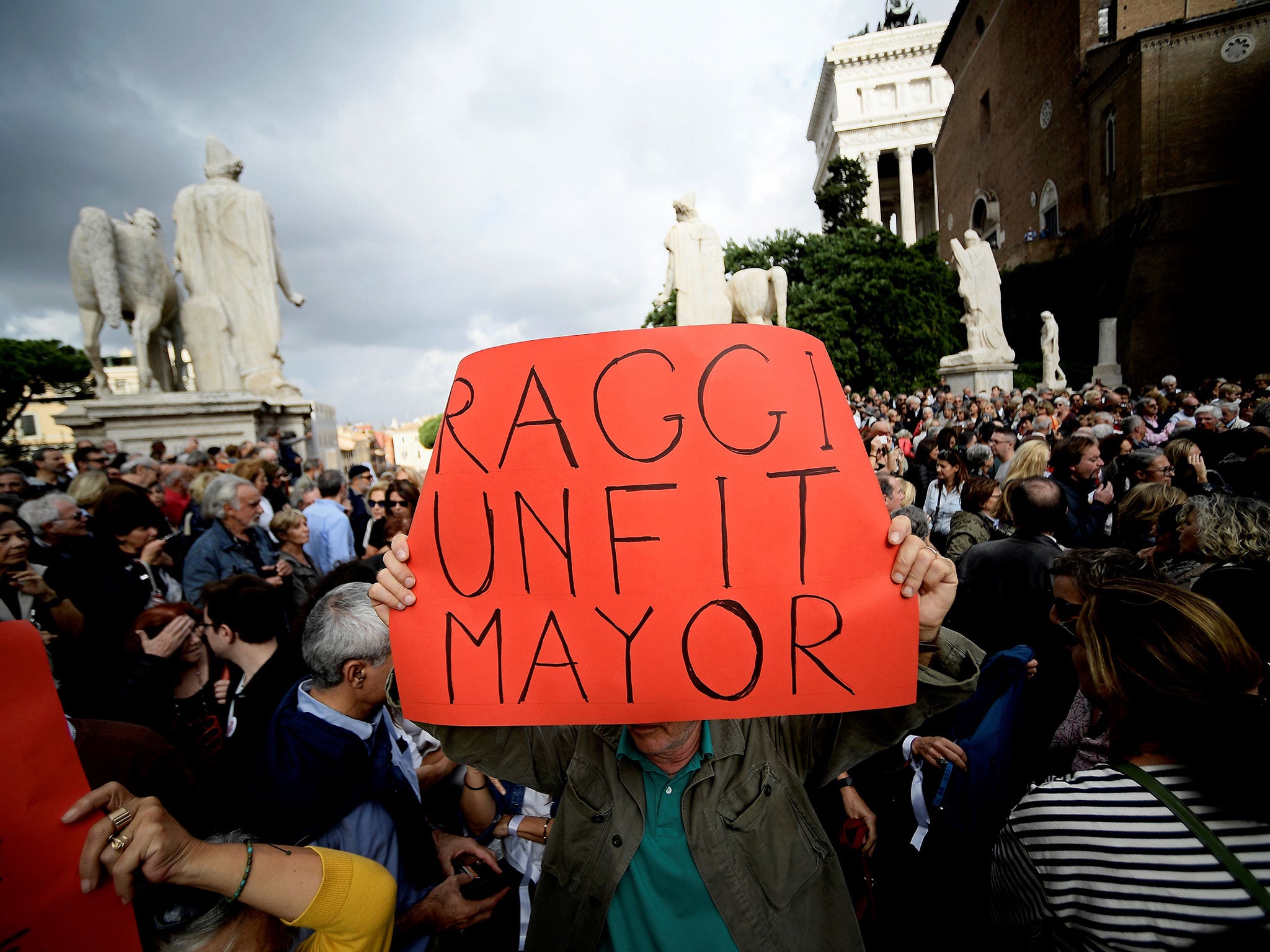
Often the target of ire, and not without reason, is the embattled mayor, Virginia Raggi. La Raggi, they call her. They say it like Seinfeld said Newman. Like bad guys say Bond. As in a comic book’s premise, Tonelli, 40, attended middle and high school with Raggi. I asked if they were friends. He told me she is suing him for defamation, in a class-action lawsuit joined by more than 25 members of her Five Star Movement party.
When I sat with Raggi before she took office in 2016, she talked a lot about recycling and finding a way to wrap Roman babies in more ecological diapers. Instead she has faced the mother of all garbage emergencies. Her administration blames the “underworld” for hampering its attempts to clean the streets, and said it suspects more foul play behind the burning this month of a garbage treatment centre that handles a fifth of Rome’s trash. The acrid air choked the city and an ominous black cloud spread over the mayor’s new hope: plastic garbage bins. Introduced for door-to-door pickup, they line city streets like stout sentries. The other day, the owner of a stationery store on my block inspected one as if it were the monolith in 2001: A Space Odyssey.
The idea of Romanisation, or the civilisation of barbarians, dates back to ancient times. Romans impressed their customs and laws on the conquered territories and on the foreigners who came to the Caput Mundi. Italian politicians still whisper that they hope that the wild populists governing the country will be Romanised by the conformist establishment.
But I have found that Romanisation works in reverse. Rome has challenged my civilised customs. “Give a Hoot, Don’t Pollute”, is not entirely compatible with the Roman trait of “menefreghismo”, the attitude of not caring less. The Romans would eat Woodsy Owl alive.
It didn’t take long for my wife, who was largely raised in Rome, to go native again. Once proudly parking the car between a skip and the curb, she looked at my disapproving expression and answered, as she does every time: “Of course it’s a spot. It’s not my fault they have no spaces.” (Last Christmas Day, when there were no parking spots in front of her aunt’s apartment, her father rolled onto the sidewalk – under a sign for a bus stop.)
The Romanisation seeps in. In the mornings, I play Jenga with the cardboard teetering atop the recycling dumpster. I try, but if there is no space, and the garbage tumbles to the street, well, whose fault is that?
The disregard for public space is infectious. I feel the etiquette fall off me as I merge into traffic or skip the line. Rome exalts the furbo, or clever, and pities the fesso, or fool. Your house better be clean, your clothes ironed, but only a sucker would sweep the sidewalk.
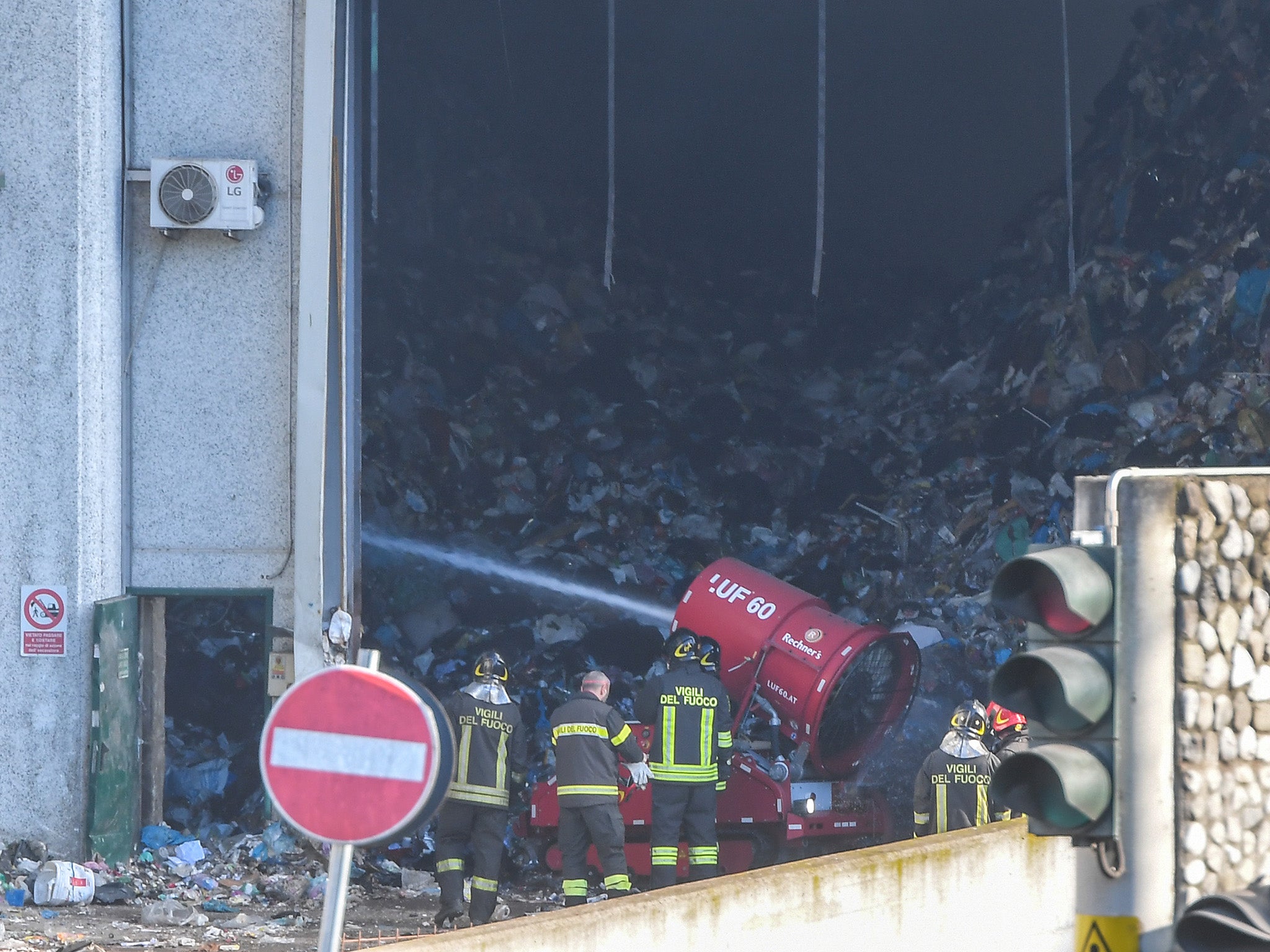
Taking action
There are, however, green shoots of civic engagement breaking through the cracks of the degradation. In recent months, demonstrators have chanted “Rome Says Enough” under La Raggi’s window. Associations dedicated to the rehabilitation of Rome, such as Retake Roma, have sought to fish car parts from the Tiber’s banks. And the other day, I got a ticket for parking my scooter on the sidewalk. It actually felt – good?
When not behind the wheel, my wife is part of the solution. She has volunteered with our kids to pick up trash at Villa Sciarra, the park by our house. Once venerated for its strutting peacocks and elegant statues and corridors lined with palm trees, Villa Sciarra has fallen into ruin. Bugs and abandonment have reduced the palms to rows of stumps. Vandals have broken the heads and limbs off the statues. Vagrants bed down amid taped-off branches at night.
On a recent afternoon, we celebrated the inauguration of a new padded mat under the playground, installed, after more than a year of delays, with private funds and donations.
“This villa was marvellous, but it has fallen into the gravest disrepair,” says Federico Morolla, 60, a leader of the Friends of Villa Sciarra, paraphrasing every Roman resident everywhere. “We citizens cannot stand by and accept this.”
He says he began to think the unthinkable: civic engagement. He persevered over the official bureaucracy, which he says discourages volunteers. “With a lot of commitment you can do something,” he adds.
To celebrate, his group arranged entertainment for the children. Despite brisk winds, there’s fire eater. With a Bic lighter, he ignites one end of what looks like an enormous Q-tip. But he struggles with the other, and as he does, the burning end drips embers onto the new padding and sends volunteers scrambling to stamp out the flames.
“Why is he ruining the playground?” my daughter asks.
The fire eater gestures for the children to move back, and takes a swig of lighter fluid that swells his cheeks. He begins whipping fireballs around like yo-yos, but one of them gets away from him. The children’s heads turn to watch the fireball fly into the cypress tree behind him. They sit silently as the fire eater, his eyes wide, his cheeks still puffed, rushes to help the volunteers put out the flame with a plastic green watering can.
Rome, it appears, won’t be rebuilt in a day.
© New York Times
Join our commenting forum
Join thought-provoking conversations, follow other Independent readers and see their replies
Comments
Bookmark popover
Removed from bookmarks